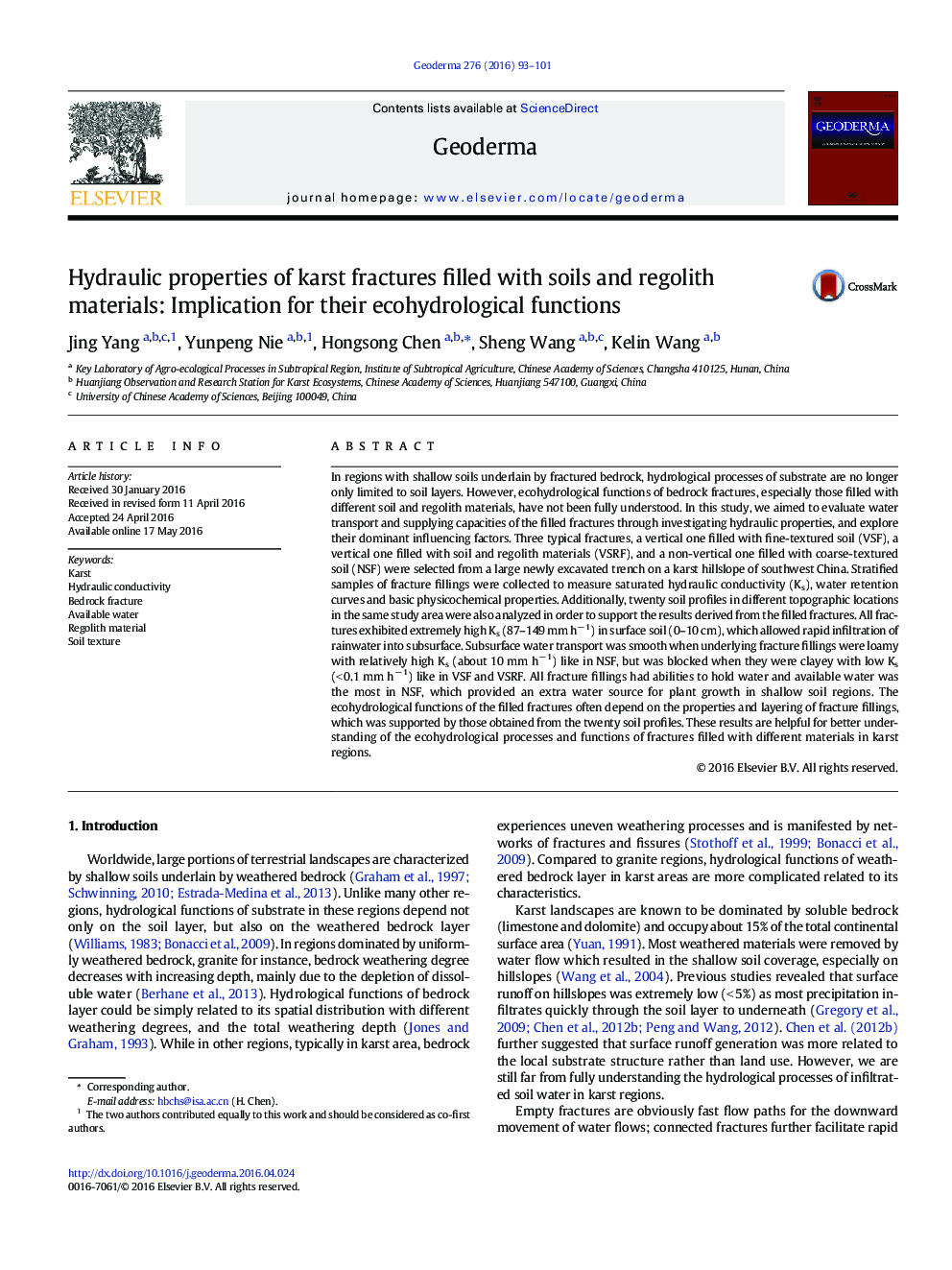| Article ID | Journal | Published Year | Pages | File Type |
|---|---|---|---|---|
| 4572935 | Geoderma | 2016 | 9 Pages |
•Water transport and supplying capacity of filled fractures were evaluated based on their hydraulic properties.•Fractures filled with less or no clayey materials employed both better water transport and supplying capacity.•Ecohydrological functions of filled fractures depend on the properties of fracture fillings and their layering.
In regions with shallow soils underlain by fractured bedrock, hydrological processes of substrate are no longer only limited to soil layers. However, ecohydrological functions of bedrock fractures, especially those filled with different soil and regolith materials, have not been fully understood. In this study, we aimed to evaluate water transport and supplying capacities of the filled fractures through investigating hydraulic properties, and explore their dominant influencing factors. Three typical fractures, a vertical one filled with fine-textured soil (VSF), a vertical one filled with soil and regolith materials (VSRF), and a non-vertical one filled with coarse-textured soil (NSF) were selected from a large newly excavated trench on a karst hillslope of southwest China. Stratified samples of fracture fillings were collected to measure saturated hydraulic conductivity (Ks), water retention curves and basic physicochemical properties. Additionally, twenty soil profiles in different topographic locations in the same study area were also analyzed in order to support the results derived from the filled fractures. All fractures exhibited extremely high Ks (87–149 mm h− 1) in surface soil (0–10 cm), which allowed rapid infiltration of rainwater into subsurface. Subsurface water transport was smooth when underlying fracture fillings were loamy with relatively high Ks (about 10 mm h− 1) like in NSF, but was blocked when they were clayey with low Ks (< 0.1 mm h− 1) like in VSF and VSRF. All fracture fillings had abilities to hold water and available water was the most in NSF, which provided an extra water source for plant growth in shallow soil regions. The ecohydrological functions of the filled fractures often depend on the properties and layering of fracture fillings, which was supported by those obtained from the twenty soil profiles. These results are helpful for better understanding of the ecohydrological processes and functions of fractures filled with different materials in karst regions.
